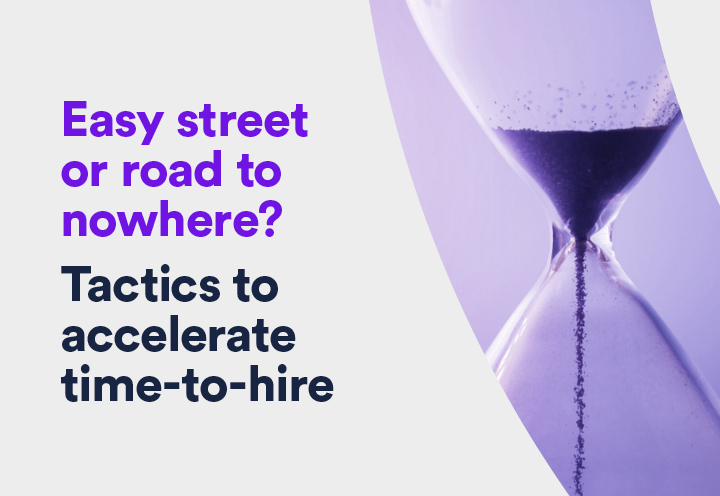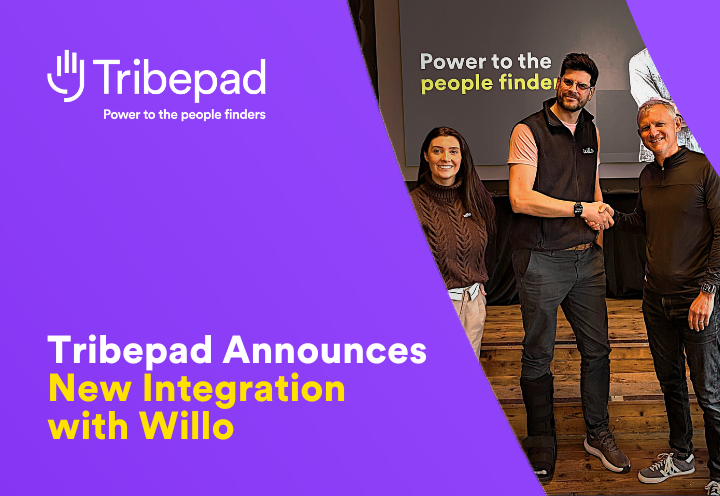Imagine a motorway. Straight lines, smooth concrete, clear line of sight. Everything purpose-built for safe, sustainable speed.
Then imagine a country road. Winding, trees overhanging, filled with potholes that’re just waiting to crack your bumper if you approach too fast.
We like to think of our recruitment process as the former but the reality is, it’s usually the latter. We think we’re moving forward as fast as we can – creating and distributing jobs; interviewing; reviewing; putting out offers; collecting references – but those tasks are interspersed with endless potholes.
- Requisition request bureaucracy
- Sprawling candidate databases
- Incomplete or incorrect candidate info
- Unclear permissions and internal compliance
- Interviewing scheduling admin
- Hiring manager bottlenecks
- Missed emails and crossed wires
- Key stakeholders on holiday
- Contract back-and-forth
Making your recruitment process more efficient and accelerating time-to-hire means systematically identifying and resolving, or mitigating the impact of, potholes like this.
Let’s dig into that.
Why does improving time-to-hire matter?
Let’s start with a reminder why time-to-hire matters so much.
1 – Hire faster
When you delay hiring, there’s an unmet need in the business (or you wouldn’t be hiring in the first place). So one of two things happen:
- The unmet need is met by existing team members. People who’re likely already stretched, perhaps are operating outside their comfort zone with new tasks, who aren’t being paid more for the extra work. There’s a major risk of increasing burnout, declining engagement and ultimately, turnover.
- The unmet need stays unmet. That’s a huge potential opportunity cost we’re talking about. Delayed projects, stalled innovation – good ideas stuck on the backburner because you simply can’t achieve them with your current people resource.
Leave either unchecked for too long and the result is unhappy customers or clients, declining margins, and stalling growth.
2 – Improve quality-of-hire
There’s a direct link from speed to quality. The best candidates expect a fast, seamless experience – and as the recruitment industry evolves, they get it from many brands they engage with.
If you’re not keeping pace with the best recruitment teams in your space, you’ll have little chance of getting the best candidates. Again, with dire knock-on implications for the organisation.
Read more: 31 practical ways to improve quality-of-hire
3 – Improve candidate experience
Candidate experience is today’s crucial differentiator for recruitment teams, and it’s profoundly entwined with time-to-hire. When your hiring process is efficient, everyone benefits. You can give unsuccessful applicants closure faster; stop holding back-up candidates in the wings while you collect references; reply to candidate emails faster.
Without potholes snarling up your time, you can offer a better service for everyone you engage with.
Download the ultimate guide to candidate experience for 2021 and beyond now
4 – Decrease recruitment costs
The longer you keep roles open, the more you spend doing so. And effectiveness decreases over time too. The longer roles are open, the less likely to fill them you become as the best candidates go off the market.
That’s not just wasteful; it’s another missed opportunity cost.
If you took every role you’ve hired over the last year and accelerated time-to-hire by 25%, how much could you have saved? And, more important, what could you have spent it on? A new recruitment marketing campaign, maybe? Extra social media spend? Better recruitment tech? A new resourcer? More awards entries?
–
Time-to-hire is either a vicious or virtuous cycle, both from recruitments’ perspective and ultimately for the business too. Let’s talk about making sure it’s the latter.
4 steps to turning time-to-hire into a virtuous cycle
Here’re four ideas…
1 – Be guided by your own data
Modern reporting functionality is an absolute must, or you’re navigating blind. You’ll need your own data and an investigative process to prioritise action and track progress systematically.
- Define your terms for consistency – when does time-to-hire start and stop?
- Understand your benchmarks – where are you now?
- Segment your data – what are your possible causes and bottlenecks?
- Explore and measure solutions — how do we systematically resolve issues?
Here’s a walkthrough of this process for time-to-hire, with data and examples.
2 – Use robust end-to-end automation
Automation is a powerful weapon in the battle to increase efficiency. Are you harnessing the full potential of recruitment technology to automate across all your processes?
For example…
- Automated candidate scoring, ranking, shortlisting and rejection
- Automated internal process and collaboration workflows
- Automated interview scheduling communication and reminders
- Automated candidate suggestions and advanced filtering from your ATS
Read all fifteen ways you can automate your recruitment.
3 – Embrace video interviewing
Video interviewing offers lots of benefits – chief among them being that it dramatically speeds up interviewing (by around 90% in our experience, depending on your current processes).
Video interviewing falls into two categories. Explore both for maximum time-to-hire improvements:
- Pre-recorded one-way video interviewing. Popular for years, recruitment teams typically use these to replace phone screening. It’s a colossal time-saver, allowing your team to record questions once then interview hundreds or thousands of candidates without extra effort.
- Live two-way video interviewing. Live video interviews have exploded in popularity thanks to the pandemic, with teams realising they can recruit remotely with less scheduling hassle, more convenience, and better compliance. Plus video interviewing means you can record interviews, which makes it much easier for interviewers from global teams on different time-zones with busy schedules to review, instead of attending live.
On the fence? These three barriers might be why – and why now’s the time to act.
4 – Review internal collaboration
The conversation around recruitment efficiency usually focuses mostly on the technology you use – but how your team collaborates is crucial too. Many of the biggest time-to-hire potholes are internal bottlenecks that arise from crossed wires, uncertain responsibilities, and muddy permissions.
Like…
- Hiring managers accepting speculative CVs from agencies, or approaching their favourite contractors directly
- Hiring managers emailing you feedback ad-hoc instead of engaging with your ATS; losing track of candidates and forgetting tasks
- Teams not knowing the chain of command or having the right access to get sign-off and keep progress moving when someone’s off sick or away
- Employees referring unsuitable candidates and chasing for endless feedback, snarling up recruiters’ time
Situations like these cause endless delays – and they’re avoidable. Recruitment’s role isn’t just to follow the recruitment process; it’s to define one. Then to educate stakeholders; create alignment; secure buy-in; drive progress; spot and troubleshoot problems – then circle back around and tweak the process.
Learn how Simon Pollen of Richmond & Wandsworth Councils builds engagement with hiring managers.
Method to resolve the madness
Few things have as big an impact on your function and business as addressing time-to-hire. And like much in recruitment, the problem may be multifaceted but it’s rarely complicated.
What it takes is a methodical, step-by-step approach. Map your road, identify your biggest potholes, then systematically do what it takes to fill them. You’ll be accelerating to motorway pace before you know it.
Need some help? The Tribepad Talent Acquisition Suite is quite the pothole-filler. Grab us for a fifteen-minute chat to tell you more.




